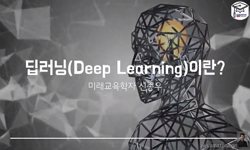Partial differential equations (PDEs) play a pivotal role in mathematical analysis and modeling of dynamic processes across various disciplines of science and engineering. Machine learning (ML) techniques have emerged as a promising new approach to so...
http://chineseinput.net/에서 pinyin(병음)방식으로 중국어를 변환할 수 있습니다.
변환된 중국어를 복사하여 사용하시면 됩니다.
- 中文 을 입력하시려면 zhongwen을 입력하시고 space를누르시면됩니다.
- 北京 을 입력하시려면 beijing을 입력하시고 space를 누르시면 됩니다.
https://www.riss.kr/link?id=A108976242
- 저자
- 발행기관
- 학술지명
- 권호사항
-
발행연도
2024
-
작성언어
Korean
- 주제어
-
KDC
505
-
등재정보
KCI등재
-
자료형태
학술저널
-
수록면
166-171(6쪽)
- DOI식별코드
- 제공처
-
0
상세조회 -
0
다운로드
부가정보
다국어 초록 (Multilingual Abstract)
Partial differential equations (PDEs) play a pivotal role in mathematical analysis and modeling of dynamic processes across various disciplines of science and engineering. Machine learning (ML) techniques have emerged as a promising new approach to solving PDEs. Among them, Physics-Informed Neural Networks (PINNs) have garnered significant attention in numerous scientific and engineering studies. PINNs employ a single deep neural network to assimilate observational data with PDEs across the entire space-time of a physical system, subsequently yielding rapid solutions. However, a PINN may entail intricate analyses or computations and can be cost-intensive, depending on initial or boundary conditions and other input parameters. To address the limitations of the PINN, especially concerning resolution for nonlinear problems, the Physical-Informed Deep Operator Network (DeepONet) is introduced in this paper. The Physics-Informed DeepONet is a deep learning framework crafted to discern solution operators for any given PDEs, even in scenarios lacking paired input/output training data. The proposed framework is able to predict solutions for various types of parameterized PDEs much faster than conventional PDE solvers. Several cases confirm that this approach is effective in establishing previously unexplored paradigms for modeling/simulating nonlinear and non-equilibrium processes in science and engineering.
동일학술지(권/호) 다른 논문
-
- 한국산학기술학회
- 이미라(Mi-Ra Lee)
- 2024
- KCI등재
-
지속가능한 농업을 위한 저탄소 인증 농산물 지불의사 분석: 20대를 중심으로
- 한국산학기술학회
- 조용빈(Yong-Been Jo)
- 2024
- KCI등재
-
아버지의 자아존중감이 자녀의 사회적 기술에 미치는 영향: 아버지-자녀 의사소통 및 자녀의 자아존중감의 순차 매개효과
- 한국산학기술학회
- 김정현(Jung-Hyun Kim)
- 2024
- KCI등재
-
재난 상황관리 의사결정 지원을 위한 담당자 맞춤형 업무 제공에 관한 연구
- 한국산학기술학회
- 김은주(Eun Joo Kim)
- 2024
- KCI등재





 DBpia
DBpia






